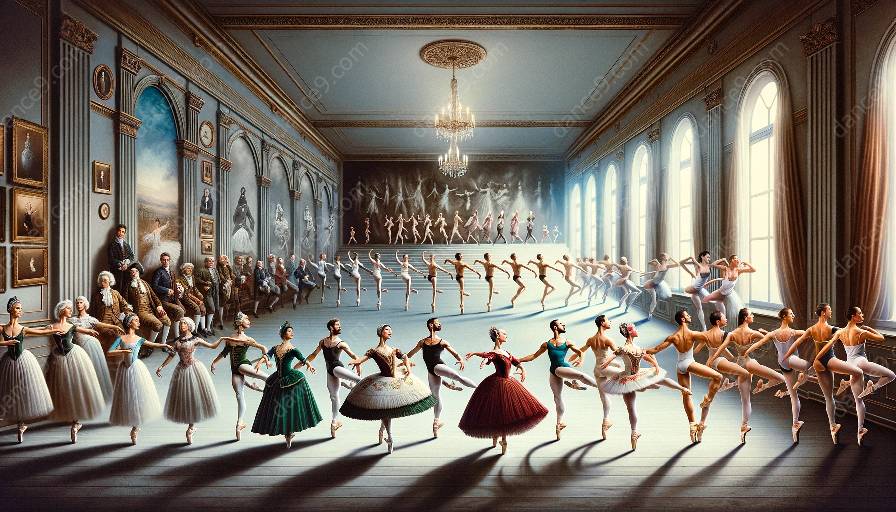Ballet has undergone significant changes in choreographic styles, impacting its techniques and overall evolution throughout history. These shifts have been influenced by various factors and have shaped the way ballet is practiced and performed today.
Evolution of Ballet Techniques
The evolution of ballet techniques is closely linked to the changes in choreographic styles. From the traditional classical ballet to the contemporary fusion styles, the techniques have adapted to incorporate new movements, forms, and expressions.
Ballet History and Theory
Understanding the historical context and theoretical foundations of ballet is essential to grasp the significance of choreographic shifts in shaping its techniques. The interplay of history, theory, and choreography has been instrumental in defining the evolution of ballet.
Prominent Shifts in Choreographic Styles
Several prominent shifts in choreographic styles have left a lasting impact on ballet techniques:
- Classical Ballet: The foundations of ballet techniques were established during the classical era, characterized by precise and codified movements, such as the five basic positions of the feet and turnout.
- Romantic Ballet: The romantic era brought a shift towards expressive movements and narrative storytelling, influencing techniques to emphasize lightness, fluidity, and emotive qualities.
- Neoclassical Ballet: The neoclassical movement led to a departure from the strict formalism of classical ballet, introducing more athleticism, speed, and angular movements that impacted the technical demands on dancers.
- Contemporary Ballet: Contemporary choreographic styles have pushed the boundaries of traditional techniques by incorporating a broader range of movements, including floor work, partnering, and a mix of dance forms.
- Ballet Fusion and Cross-disciplinary Influences: With the rise of fusion styles, such as ballet with jazz, hip-hop, and modern dance, ballet techniques have evolved to integrate diverse influences, requiring dancers to adapt to a wider repertoire of movements and styles.
Influences on Ballet Techniques
These choreographic shifts have significantly influenced ballet techniques in various ways:
- Technical Adaptations: Changes in choreography have led to modifications in training and technique to accommodate the evolving stylistic demands, such as greater flexibility, strength, and versatility.
- Artistic Expression: The shifts in choreographic styles have expanded the expressive range of ballet techniques, allowing for a richer portrayal of emotions, narratives, and themes through movement.
- Diversity of Movements: Ballet techniques have broadened to encompass a wider range of movements, from traditional classical poses to more contemporary and dynamic forms, reflecting the changing choreographic landscape.
- Cross-disciplinary Skills: The fusion of ballet with other dance forms has required dancers to develop cross-disciplinary skills, blending techniques from different styles and genres to create a more versatile dance vocabulary.
Conclusion
The evolution of ballet techniques has been intricately intertwined with the shifts in choreographic styles, shaping the way ballet is practiced, performed, and perceived. Understanding these historical and stylistic influences is crucial in appreciating the continuous development and adaptation of ballet techniques in response to the evolving art form and cultural trends.





























